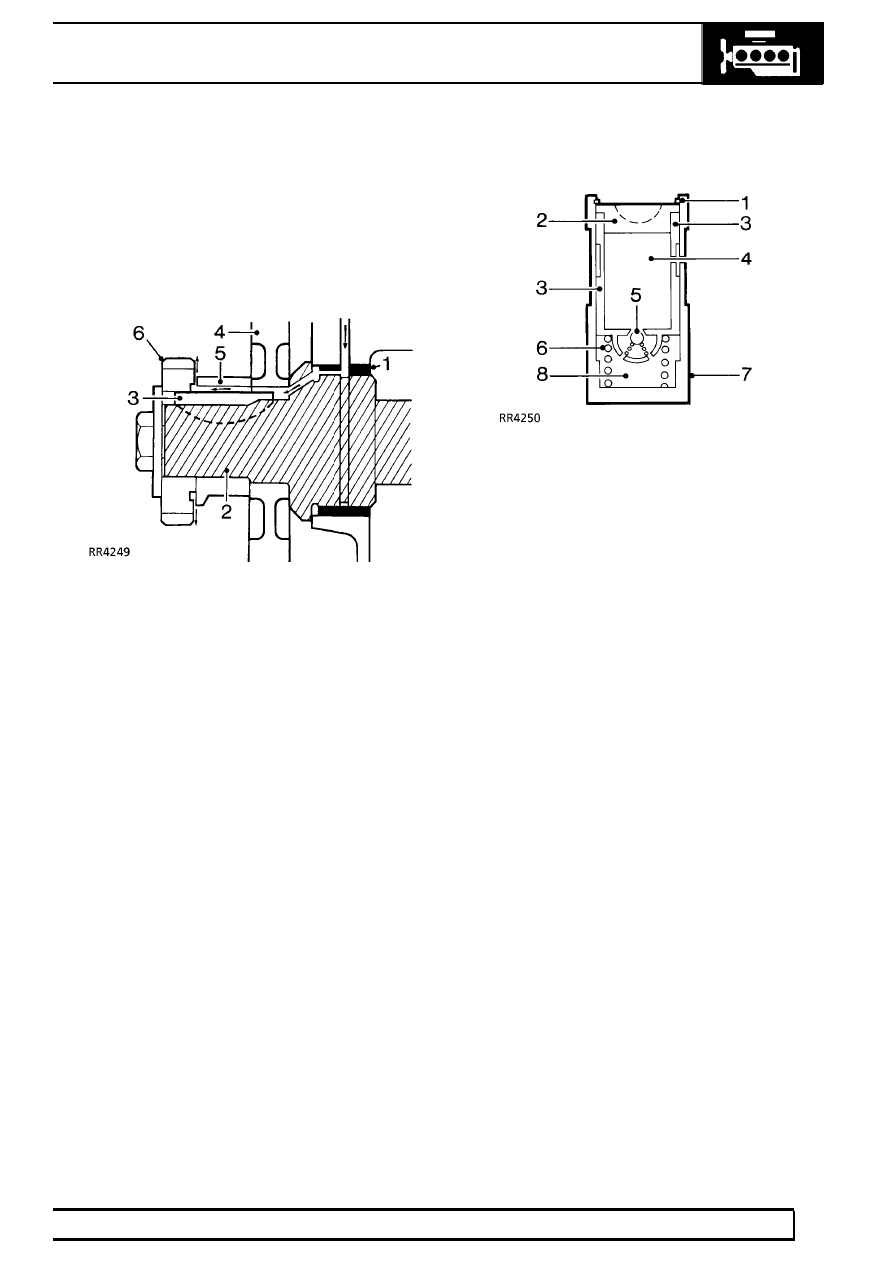Range Rover Classic. Manual - part 27

V8i
5
DESCRIPTION AND OPERATION
Distributor and timing chain lubrication
The distributor and timing chain are lubricated from
the camshaft front bearing. The feed to the timing
chain is channelled along the camshaft sprocket, key
and spacer where it sprays onto the chain.
1. Bearing
2. Camshaft
3. Key
4. Camshaft timing chain sprocket
5. Spacer
6. Distributor drive gear
Hydraulic tappets
1. Clip
2. Pushrod seat
3. Inner sleeve
4. Upper chamber
5. Non-return ball valve
6. Spring
7. Outer sleeve
8. Lower chamber - high pressure
The purpose of the hydraulic tappet is to provide
maintenance free and quiet operation of the inlet and
exhaust valves. It achieves its designed purpose by
utilizing engine oil pressure to eliminate the
mechanical clearance between the rockers and the
valve stems.
During normal operation, engine oil pressure present
in the upper chamber 4, passes through the
non-return ball valve 5 and into the lower (high
pressure) chamber 8.
When the cam begins to lift the outer sleeve 7, the
resistance of the cylinder valve spring felt through the
pushrod seat 2, causes the inner sleeve 3, to move
downwards inside the outer. This slight downward
movement of the inner sleeve closes the ball valve 5
and increases the hydraulic pressure in the high
pressure chamber, sufficient to ensure that the push
rod opens the valve fully.
As the tappet assembly moves off the peak of the cam
the ball valve 5 opens to equalize the pressure in both
chambers which ensures that the valve fully closes
when the tappet is on the back of the cam.